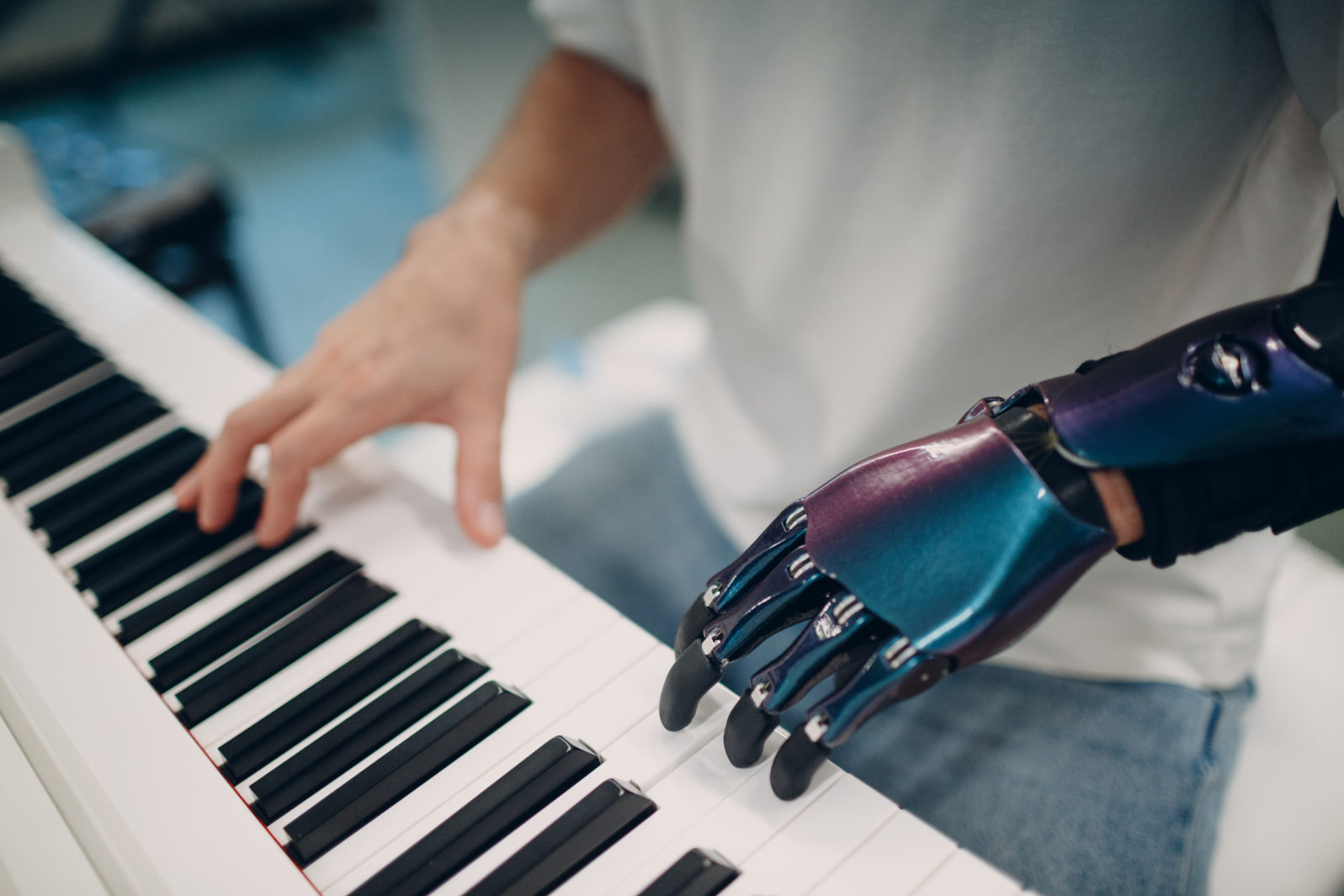What If a Prosthetic Limb Could Feel Like the Real Thing?
No, this isn’t some Uncanny Valley; the human nervous system responds to electrical signals from machinesA NOVA special premiering February 23, looks at a remarkable new development in prostheses that “allows prosthetic legs to move and feel like the real thing.” Here’s the trailer:
Follow the dramatic personal journey of Hugh Herr, a biophysicist working to create brain-controlled robotic limbs. At age 17, Herr’s legs were amputated after a climbing accident. Frustrated by the crude prosthetic limbs he was given, Herr set out to remedy their design, leading him to a career as an inventor of innovative prosthetic devices. Now, Herr is teaming up with an injured climber and a surgeon at a leading Boston hospital to test a new approach to surgical amputation that allows prosthetic limbs to move and feel like the real thing. Herr’s journey is a powerful tale of innovation and the inspiring story of a personal tragedy transformed into a life-long quest to help others.
“Augmented” at NOVA (February 23, 2022)
One needn’t agree with Dr. Herr’s heady implication that high tech prosthetics can be better than the real thing to see that they can liberate many amputees to go back to what they do best.
In another recent development, a robotic hand enabled one test volunteer amputee to “pluck grapes from their stems, and stuff a pillow into its case.” Such fiddly tasks often require a sense of touch as well as sight.
According to a study published Wednesday in the journal Science Robotics, a team of researchers at the University of Utah has engineered a prosthetic system that’s given a man whose hand was amputated the ability to feel the sensation of touch. Though the prosthetic hand remains imperfect, the findings suggest the new device is the most sensitive of its kind to date.
As a result, the patient, Keven Walgamott, can now text on his cell phone, pluck a grape from its stem, and even put on his wedding ring—everyday acts he hasn’t been able to perform with both hands since 2002.
Katherine J. Wu, “This robotic hand can partially restore a sense of touch” at Nova (January 26, 2019) The paper requires a subscription.
The basis of the technology is the fact that the human nervous system can work with electrodes as well as nerves, as both use electrical signals. It comes down to a question of making all the complex connections that we take for granted… until something happens:
But the crux of the breakthrough was an innovation called the Utah Slanted Electrode Array (USEA)—a series of electrodes implanted into Walgamott’s arm that provided an electrical link between his limb’s remaining nerves and the prosthesis. Traversing this wireway, signals passed from the prosthesis to a nearby computer, which converted the message into something interpretable by the brain.
Katherine J. Wu, “This robotic hand can partially restore a sense of touch” at Nova (January 26, 2019) The paper requires a subscription.
The next stage is to make the prosthesis less dependent on a nearby computer.
Eventually, the frontier will be making such devices affordable for the vast number of amputees living in less well-off countries where advanced research facilities are less common.
Recent years have seen an explosion in innovations in AI and bionics that give new hope to amputees and people with sight issues. Of course nothing replaces the real thing but some new tech replaces the functionality of the natural limb, which is a critical advance:
● A Lego toy that solves mazes may bring new hope to amputees. Organic materials that enable computer chips to work like neurons could improve the usability of prostheses. A quarter century ago, CalTech engineering prof Carver Mead saw that electronic systems would work better for us if they imitated natural nervous systems.
● The Bionic Man was science fiction; the bionic hand is not. A recent internet-savvy bionic hand, developed by an American neuroscientist and computer engineer, is the most flexible yet, with sensory feedback. The trouble is, if the new bionic hands are going to help most of the world’s amputees , they can’t cost six million dollars, as in the old TV show.
● Prosthetic hand controlled by thoughts alone? It’s here. Decades ago, no one could control a prosthesis only by thought. There is lots of room for the field to grow still. (2020)
● New mind-controlled robot arm needs no brain implant. The thought-controlled device could help people with movement disorders control devices without the costs and risks of surgery. (2019)
● High tech can help the blind see and amputees feel. It’s not a miracle; the human nervous system can work with electronic information. (2019)
